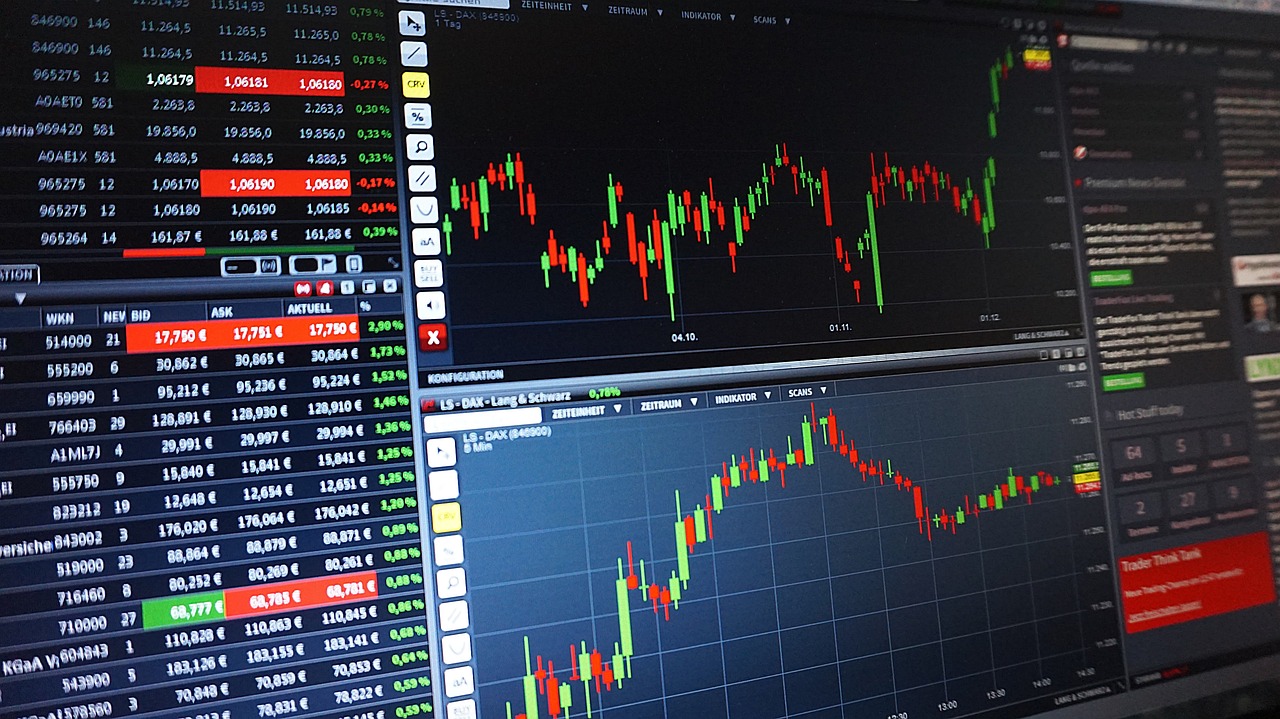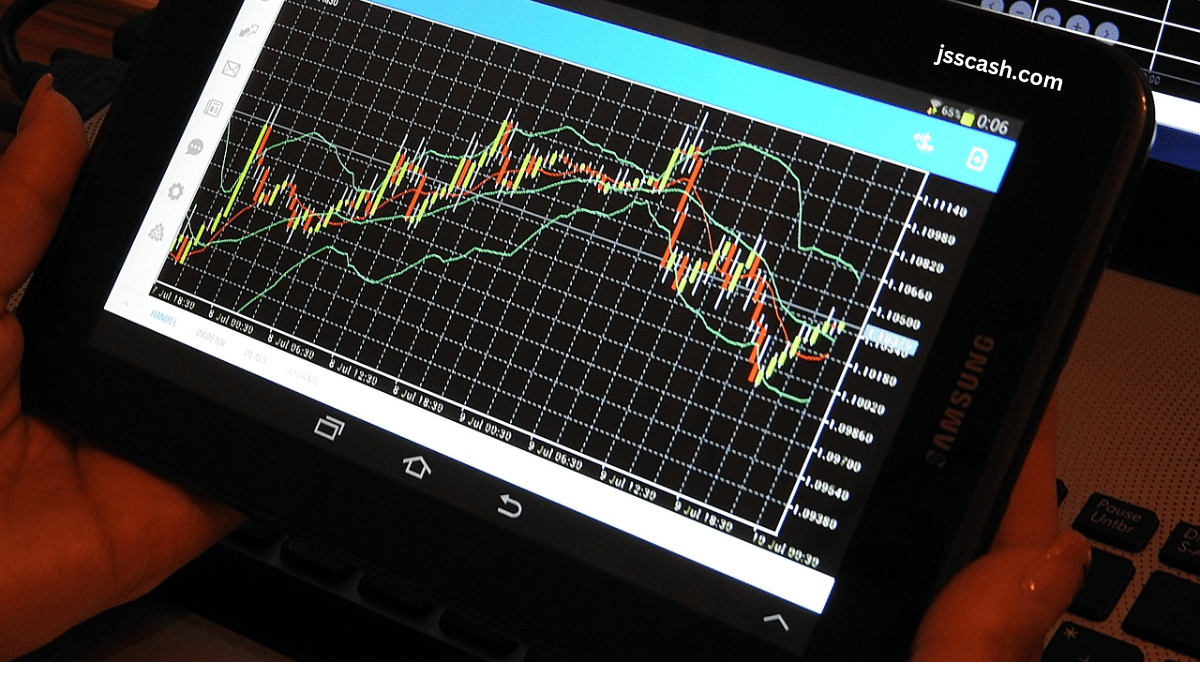Candlestick patterns are powerful visual tools that traders use to understand stock market trends and improve their decision-making. These patterns, derived from historical price movements, help predict future behaviour by revealing investor sentiment in a simple and effective format. Whether you’re a beginner or an experienced trader, mastering candlestick patterns can significantly enhance your trading strategy.
In this guide, we’ll explore what candlestick patterns are, how to read them, their different types, and how to use them alongside other technical indicators to maximise trading success.
What Are Candlestick Patterns?
Candlestick patterns are visual representations of a stock’s price action over a specific period. Each candlestick encapsulates four key pieces of data: the opening, high, low, and closing prices.
This format helps traders quickly assess the mood of the market and anticipate possible changes. When used correctly, candle patterns can provide early signals of potential reversals, continuations, or consolidations in the market.
Understanding the Structure of a Candlestick
Each candles has two main components:
1. The Body
The body represents the price range between the opening and closing prices for that period.
- A green (or white) body means the closing price was higher than the opening (bullish).
- A red (or black) body means the closing price was lower than the opening (bearish).
2. The Wicks (Shadows)
These are the thin lines above and below the body, showing the highest and lowest prices during the session.
- The upper wick indicates the session’s high.
- The lower wick indicates the session’s low.
Understanding the proportion between the body and wicks helps interpret market sentiment—whether bulls or bears had the upper hand during the trading period.
Types of Candlestick Patterns
Candlestick patterns fall into three major categories:
1. Reversal Patterns
These signal a potential change in the current market direction. Reversal patterns are useful when identifying entry and exit points.
2. Continuation Patterns
These suggest that the current trend will likely continue. Traders often use them to hold positions during trends.
3. Indecision Patterns
These indicate market uncertainty or balance between buying and selling forces. They typically signal a pause in the market before a breakout or reversal.
Popular Candlestick Patterns Explained
Here are some of the most widely used candle patterns every trader should know:
1. Doji: A Sign of Market Indecision
A Doji forms when the opening and closing prices are nearly identical, resulting in a small or no real body.
- In an uptrend, a Doji may suggest that buyers are losing control, hinting at a potential reversal.
- In a downtrend, it may show seller exhaustion and a possible upward reversal.
Types of Doji:
- Standard Doji: A neutral pattern.
- Gravestone Doji: Bearish reversal.
- Dragonfly Doji: Bullish reversal.
- Long-Legged Doji: High volatility and indecision.
2. Hammer and Hanging Man: Reversal Patterns with a Twist
Both the Hammer and Hanging Man have small bodies and long lower wicks. The interpretation depends on the trend in which they appear.
- Hammer: Appears at the bottom of a downtrend. Shows that sellers pushed the price down but buyers regained control. It’s a bullish reversal signal.
- Hanging Man: Appears at the top of an uptrend. Suggests potential weakness and a bearish reversal.
Key Insight: These patterns should be confirmed with the next candle and ideally with volume or technical indicators.
3. Engulfing Patterns: Strong Reversal Indicators
The Engulfing Pattern consists of two candles and indicates a potential trend reversal.
- Bullish Engulfing: A small red candle followed by a large green candle that fully engulfs the red one. Appears during a downtrend, indicating a potential reversal to the upside.
- Bearish Engulfing: A small green candle followed by a larger red candle that fully engulfs the green one. Appears during an uptrend, suggesting a shift to bearish sentiment.
4. Morning Star and Evening Star: Triple Candlestick Reversals
These are three-candle patterns used to confirm strong reversal trends.
- Morning Star: Found at the bottom of a downtrend. Composed of:
- A long bearish candle
- A small-bodied candle (indecision)
- A strong bullish candle that closes above the midpoint of the first candle It signals a bullish reversal.
- Evening Star: Found at the top of an uptrend. Composed of:
- A long bullish candle
- A small-bodied candle (indecision)
- A bearish candle that closes below the midpoint of the first candle It indicates a bearish reversal.
These patterns are more reliable when they occur near key support or resistance levels and are confirmed by volume.
How to Use Candlestick Patterns Effectively
Understanding candlestick patterns is just the beginning. To trade successfully using them, you must also integrate them into a broader strategy.
1. Combine with Technical Indicators
Candlestick patterns become significantly more reliable when used with other tools:
- Support and Resistance Levels: Candlestick reversals near these areas are more meaningful.
- Moving Averages: Identify the broader trend and use candle to find entry or exit points.
- Relative Strength Index (RSI): Confirm overbought or oversold conditions before acting on candlestick signals.
- Volume: Higher trading volume on a reversal pattern adds credibility to the signal.
2. Use Proper Risk Management
Even the most accurate candlestick patterns can fail due to unexpected news or market sentiment shifts. Always:
- Set stop-loss orders to minimize losses.
- Use position sizing to avoid overexposure.
- Avoid confirmation bias—don’t act on patterns unless you have solid confirmation.
3. Choose the Right Time Frame
The significance of candlestick patterns increases with longer time frames:
- 5-minute or 15-minute charts are best for day trading but can produce more false signals.
- Daily and weekly charts offer stronger, more reliable patterns for swing and long-term trading.
4. Consider Market Context
Patterns don’t exist in isolation. A bullish pattern in a strong downtrend might just be a short-lived retracement. Always consider:
- Current trend strength
- News or economic events
- Sector or market-wide sentiment
Pros and Cons of Using Candlestick Patterns
Pros
- Visually intuitive and easy to learn.
- Provide early signals of potential price action.
- Applicable to all time frames and markets.
Cons
- Can produce false signals in choppy markets.
- Require confirmation from other indicators.
- Interpretation can be subjective for beginners.
Real-Life Application: Trading with Candlesticks
Imagine you’re analyzing a stock that’s been declining steadily. You notice a Hammer pattern forming at a known support level, and the RSI shows oversold conditions. Volume spikes on the following bullish candle, confirming buying pressure.
This combination of signals gives you a strong indication to enter a long trade with a stop-loss below the support line. Your target could be the next resistance level. Here, candlestick patterns help form a complete trade setup, not just a guess.
Conclusion: Why Candlestick Patterns Matter
Candlestick patterns are more than just colorful charts—they tell a story about the battle between buyers and sellers. Understanding that story can give you a real edge in the market.
To master candlestick patterns:
- Learn the structure and meaning of each pattern.
- Combine them with other technical analysis tools.
- Practice disciplined risk management.
- Use longer time frames for better accuracy.
While no method guarantees success, a thoughtful approach to candlestick analysis can dramatically improve your decision-making and consistency in trading. Whether you’re investing in stocks, forex, or cryptocurrencies, candlestick patterns remain one of the most reliable visual indicators available.
FAQs: Common Questions About Candlestick Patterns
Q1. Can candlestick patterns be used in all financial markets?
Yes, they are used in stocks, forex, commodities, and cryptocurrencies.
Q2. How many candlestick patterns should I learn?
Focus on the 10–15 most reliable patterns like Doji, Hammer, Engulfing, and Stars. Mastering a few is better than knowing many poorly.
Q3. Are candlestick patterns enough on their own?
No, they should be combined with trend analysis, indicators, and solid risk management.








1 thought on “How to Use Candlestick Patterns in Stock Trading ”